
Osteoporosis & Lifting: How SPC Builds Bone Safely
Learn how Smith Performance Center helps people with osteoporosis and lifting programs that build stronger bones safely through progressive strength and impact training in Tucson.
Find related articles and learn more about our process at SPC.

Learn how Smith Performance Center helps people with osteoporosis and lifting programs that build stronger bones safely through progressive strength and impact training in Tucson.
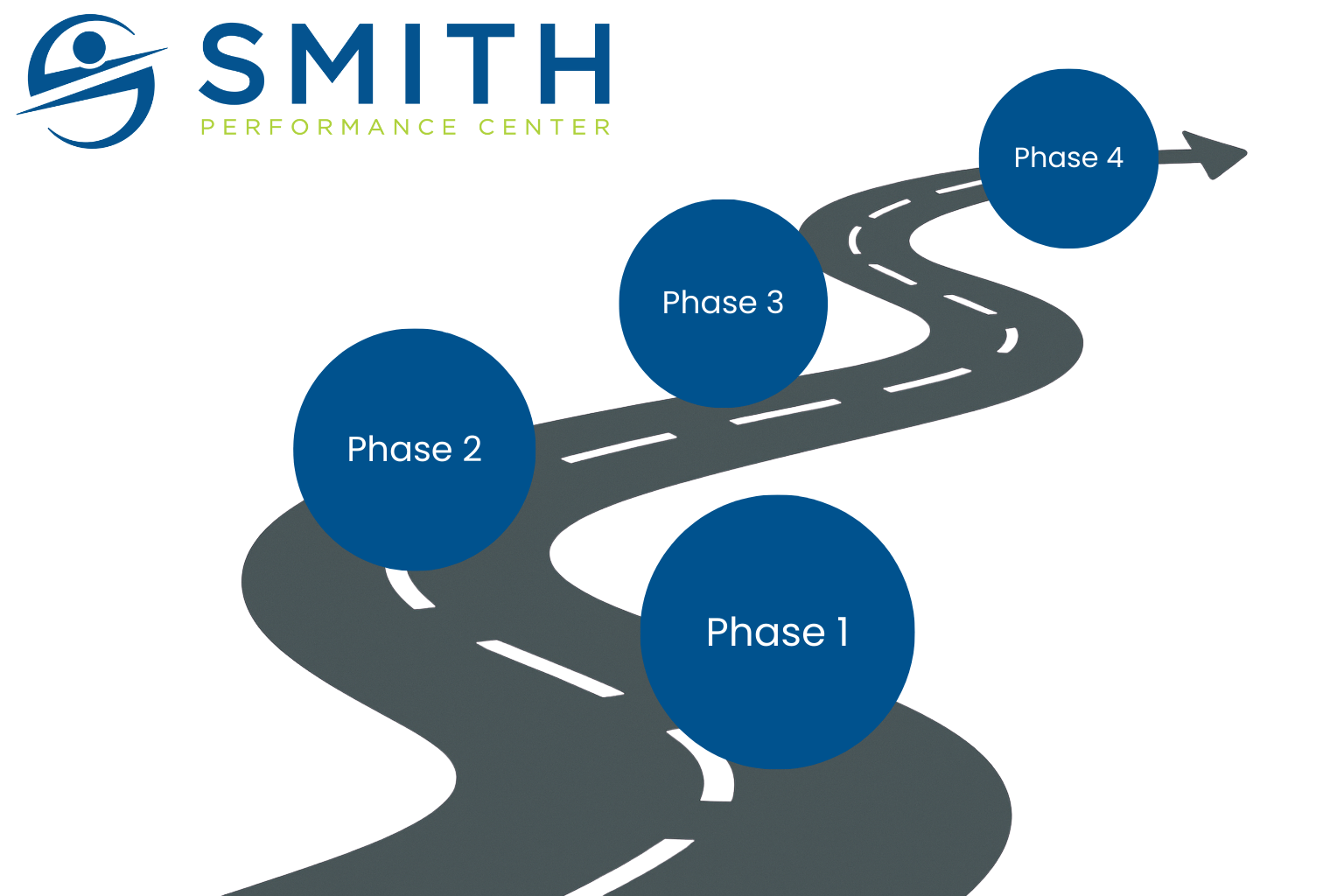
At Smith Performance Center, the home plan is a central feature of your rehabilitation experience. If you’ve worked with physical therapy in the past, you’ve probably been given a list of exercises to do on your own, most often called a ther-ex list or home exercise plan. Our approach is different. The purpose of your home plan isn’t just to give you something to do between visits — it’s to improve your tissue capacity and help you progress safely toward your goals. And the strategy often changes as you move from Phase 1, where we identify and outline what is causing your pain, to Phase 2, where you learn to manage your symptoms, to Phase 3, where we work to build your tissue capacity and progress your activity. Learn more about this process in our article “What are the phases at Smith Performance Center?“ Why the Home Plan Matters To
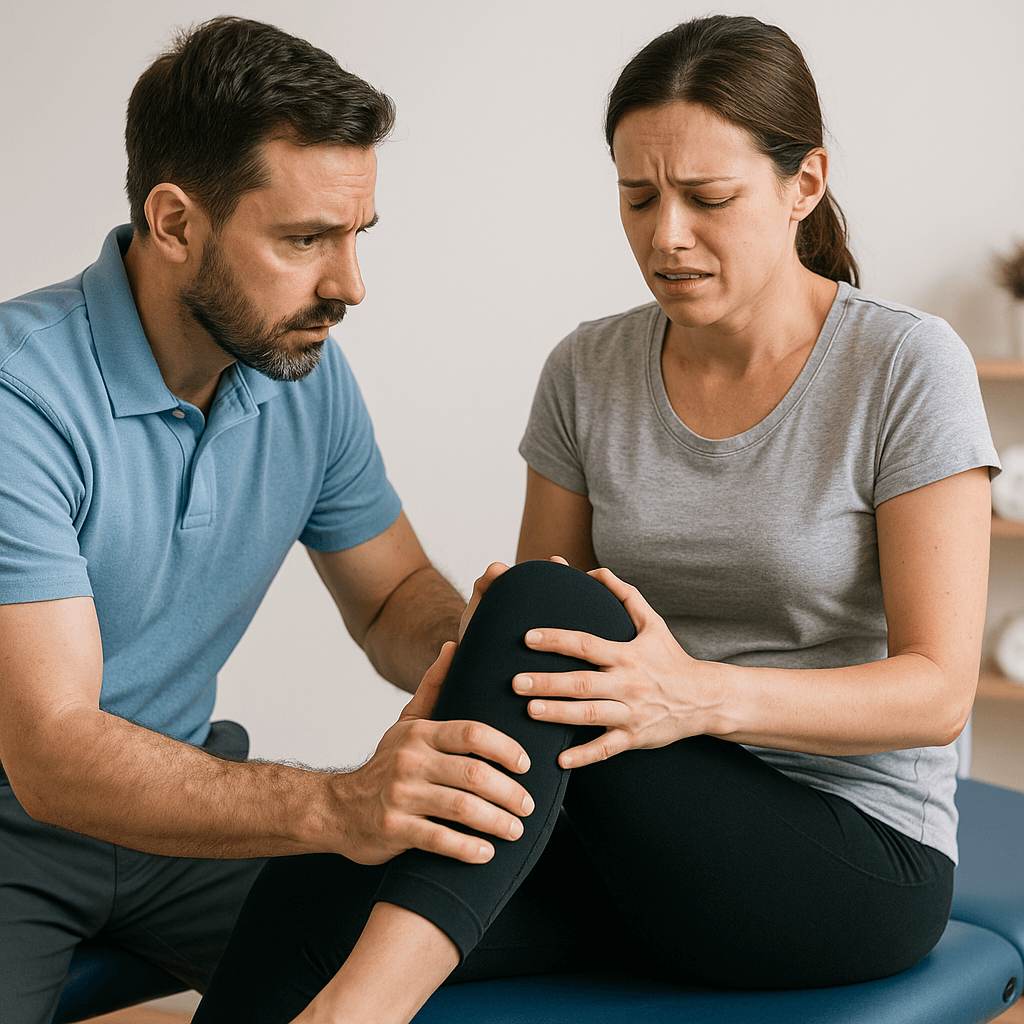
During recovery, there comes a pivotal moment when symptoms improve, and the client feels like they’ve turned a corner. Life feels good again, and naturally, activity levels increase. This change is often unconscious or unintentional—but its consequences can be significant. A rehabilitation flare-up is defined as a return or increase in the original symptoms that led the patient to seek care. The natural reaction to a flare-up is often to question whether the real problem is being addressed. Read: the diagnosis is wrong. But this reaction can lead to a critical misstep—focusing on the wrong issue and missing an opportunity for patient empowerment. Diagnostic Errors vs. Rehabilitation Flare-Up Mismanagement Achieving the correct diagnosis involves identifying potential tissue pain generators, noting local and regional contributors, considering central modulation, and uncovering triggers. This process requires careful collection, analysis, and prediction. And there can be many reasons that diagnosis is hard, but once
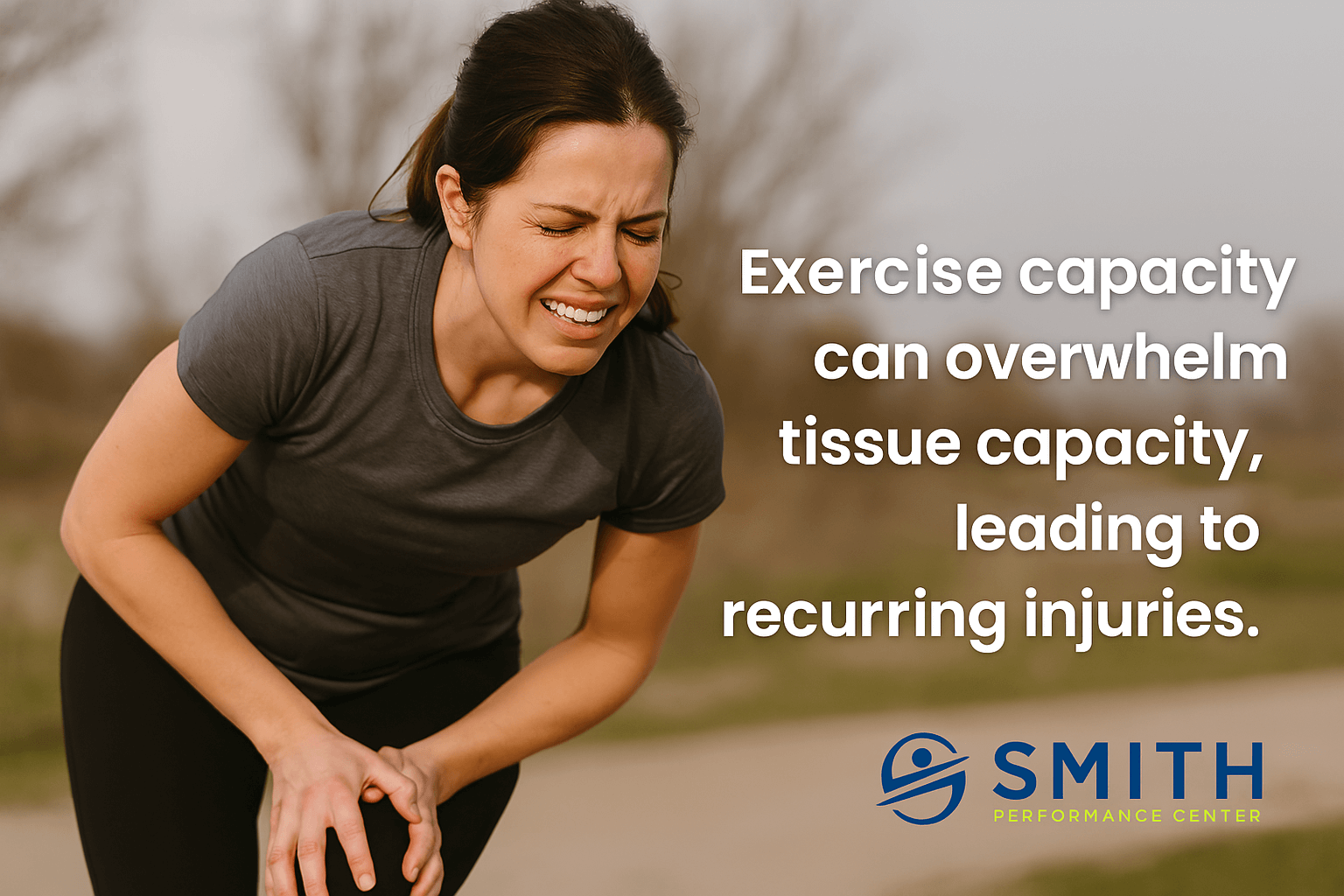
You’re Doing the Work—So Why Does Your Body Keep Breaking Down? You show up. You put in the effort. Whether it’s running, lifting, group fitness, or weekend hikes, you’re trying to stay active. But despite the commitment, you keep dealing with recurring injury from exercise. Pain shows up, progress stalls, and your body feels more unpredictable than it should. This isn’t about motivation. It’s about biology.The real issue is a mismatch between what you can make yourself do and what your body is built to tolerate. At Smith Performance Center, we call that gap the difference between exercise capacity and tissue capacity the rehab standard—and it’s one of the most overlooked problems in rehab and training. What Is Exercise Capacity? Exercise capacity is your ability to push through effort and accumulate work over time. It’s what most people think of as “fitness.” It includes: Exercise capacity reflects what you’re capable
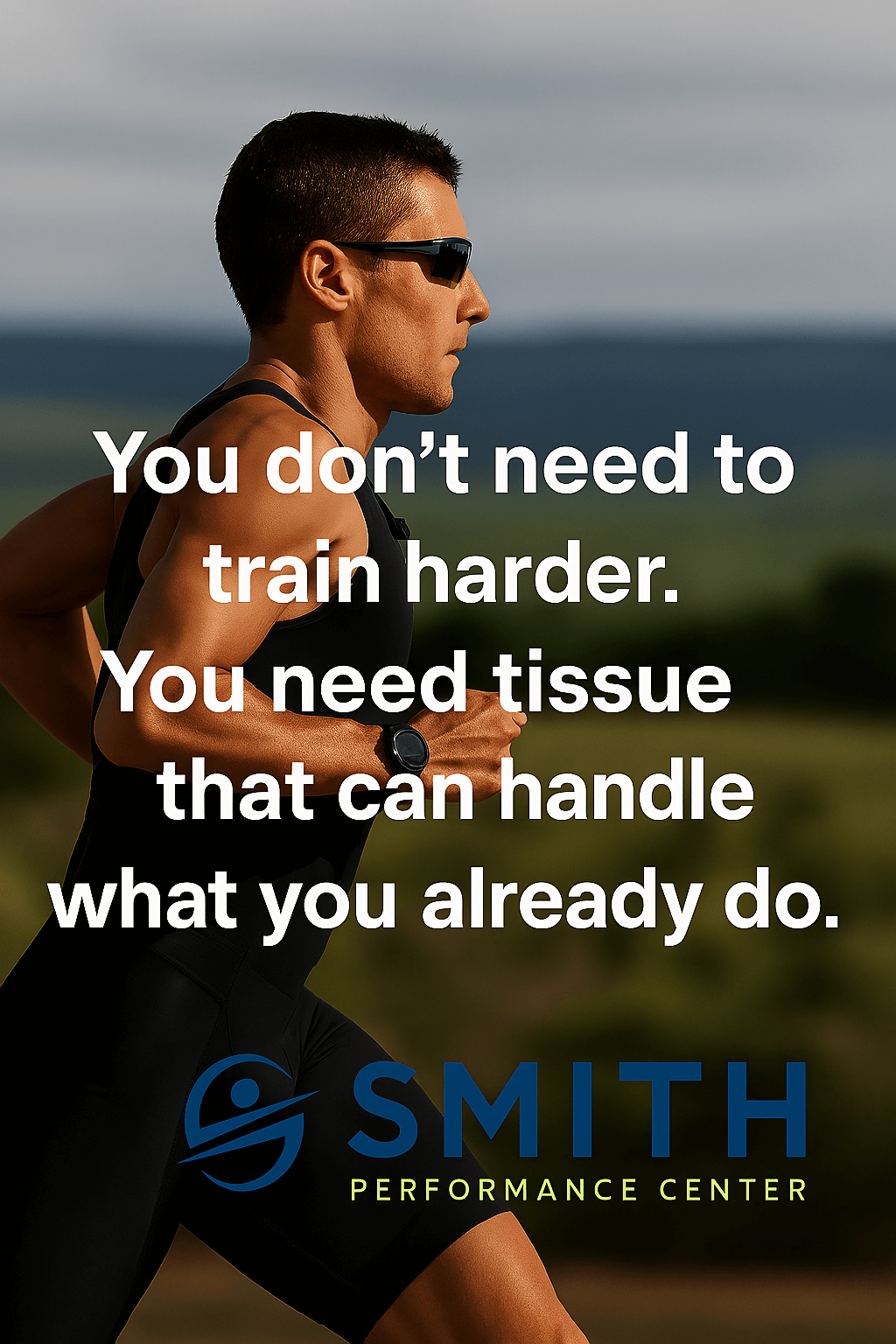
Recurring injuries derailed Alex’s triathlon training for years—until he adopted a structured, phase-based rehab approach. This case study shows how the Smith Performance Center Phase System helped him move from chronic pain to consistent performance by focusing on what most athletes overlook: building tissue capacity to match training demands.
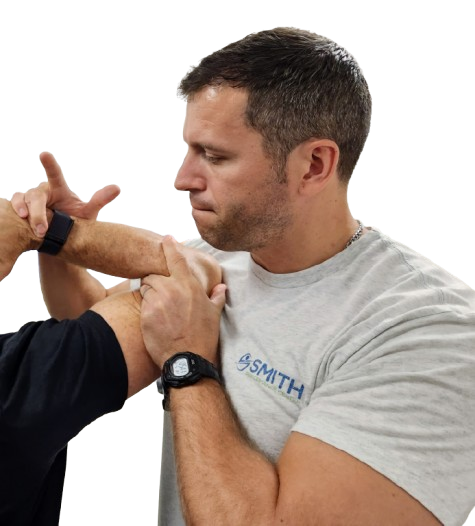
The Evolution of Thought Around Meniscus Injuries Clinical practice is filled with successes and failures. For some reason, failures tend to linger in memory the longest and often drive the biggest changes in how we approach patient care. A significant moment in my clinical career involved a meniscus tear, knee pain, and the need for surgery. One of the most impactful shifts in my approach to knee pain, particularly in cases involving meniscus tears, came from a repeated clinical pattern: patients improving, then regressing, over and over. This frustrating cycle forced me to rethink my process and align it with a more structured framework—one that incorporates the Smith Performance Center Phases. This helped me answer the question, “Does a meniscus tear require surgery, or can it be successfully rehabbed without going under the knife?” The Traditional View: Meniscus Surgery vs. Rehab For years, meniscus tears were considered a primary cause

Structuring your endurance and strength programming can make or break your training. To help clarify your training schedule, we use three key questions to correctly scaffold the program. While the typical question we hear circles around sport-specific exercises, more important questions often get missed—questions that can make or break the season and influence your performance on race day. Question 1: Are You In-Season or Off-Season? Your immediate reaction might be, “I’m not sure what the difference is.” To clarify, our strength coach, Spencer, offers this guidance: “If you’re building up to a specific race and tapering to maximize fitness while reducing fatigue, you’re in-season. Out of season might still include races, but it’s not aimed at peak performance.” To put it succinctly, here’s how our team defines it: So, which one are you currently in? Once you know, we can get specific. If You’re In-Season: For athletes training in-season, here’s
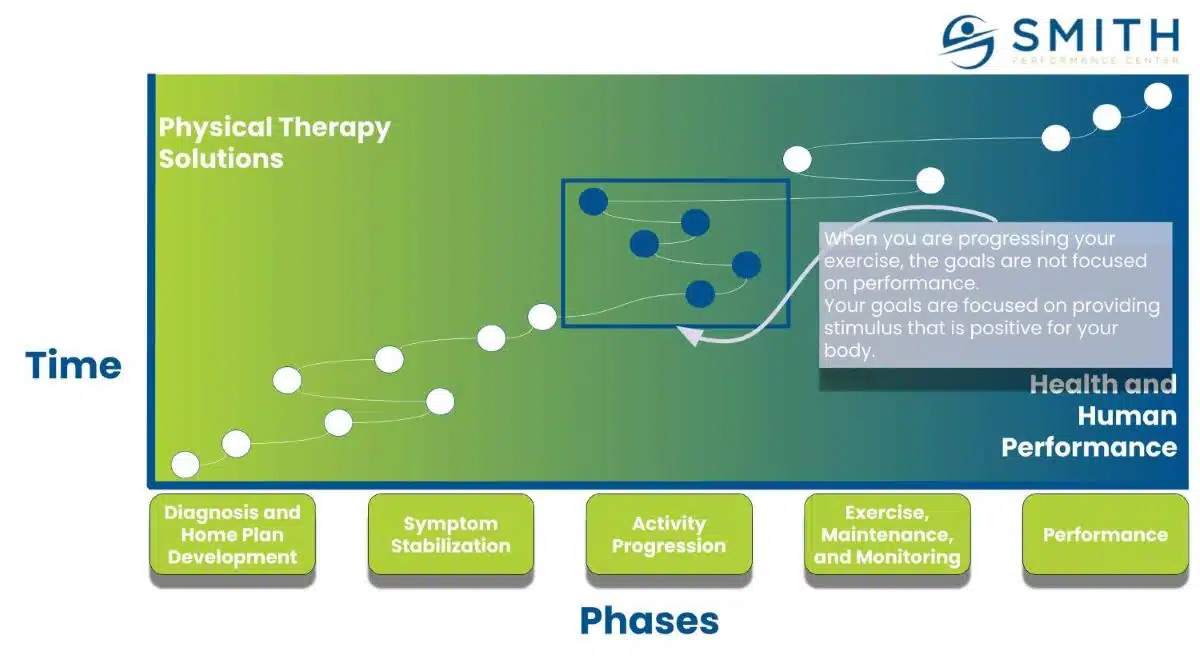
Goal setting is one of the most important, yet tricky aspects of training. Our team believes that goals are secondary to developing habits and systems that you can do day in and day out. We call this an exercise habit and it is a critical aspect of becoming an exerciser. However, goals can help to shape your training, increase motivation, and improve decision-making during the course of workouts. When you are returning from an injury or dealing with a particularly irritating pain, we believe your goal is very specific. You need to exercise without your body feeling terrible. While this sounds obvious, one of the most common training mistakes our coaches see clients make is too much focus on performance while ignoring a recurring injury or pain. If you have pain during your running, biking, lifting, etc., you will not achieve performance goals. We strongly believe there are 4 goals
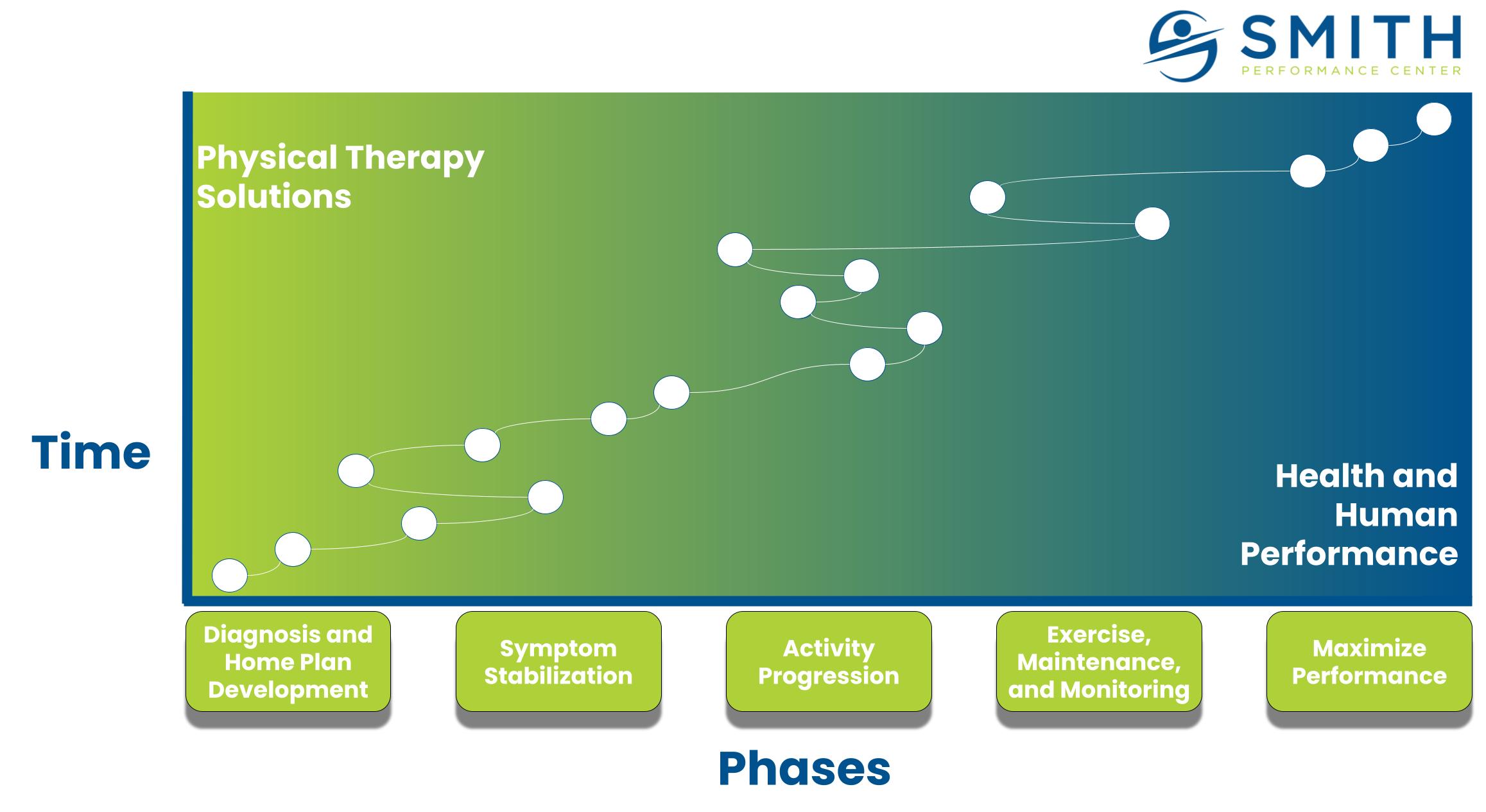
At Smith Performance Center, we focus on the main problem of the client. This focused process revealed a recurring set of problems that many of our clients experienced. This led to an overall process we call SPC Phases. There are 5 phases for our clients at Smith Performance Center: Diagnostics and Home Plan Development, Symptom Stabilization, Activity Progression, Exercise, Maintenance, and Monitoring, and Maximize Performance. Each phase consists of a main problem, the common challenges experienced by the clinician, coach, and client when managing your problem, steps to achieve along the way, and a promise for what you get when you complete the phase. We believe a clear process matters to your overall success. We want to explain the problem, common challenges, steps to achieve, and the promise. The Focus On A Problem The focus of a phase is the problem being solved. In Diagnosis and Home Plan Development, we
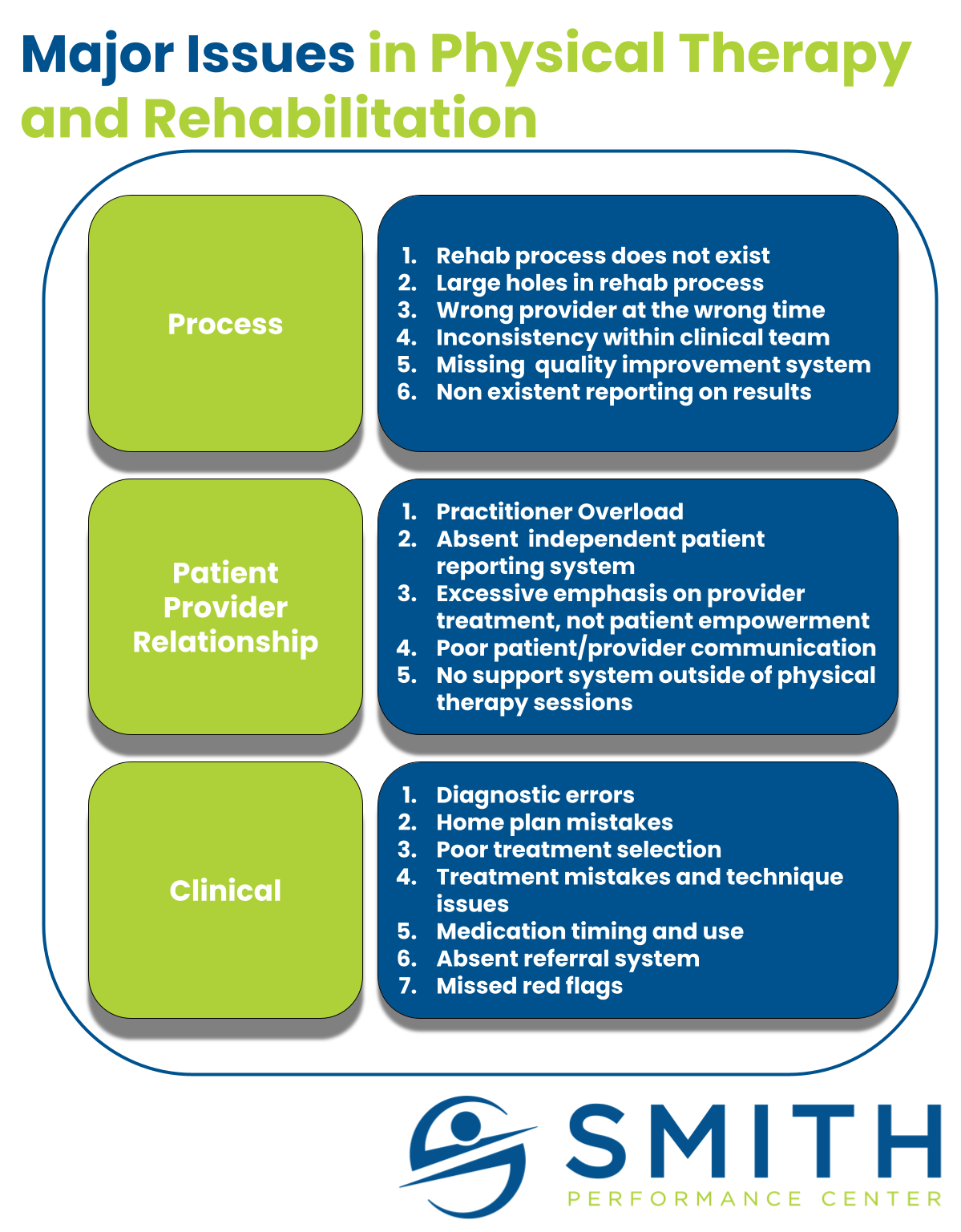
Physical therapy quality is highly inconsistent between clinicians, clinics, and companies. Numerous factors play into these discrepancies, including clinical process, management structure, payment models, clinician-patient time, use of assistants, patient load, clinician training, and business models. These issues often culminate in underwhelming rehabilitation outcomes for clients. When embarking on a rehab journey, most patients don’t anticipate these issues. As Sarah Smith, PT, DPT, and co-founder of Smith Performance Center, observes: “Many patients don’t know where to start their rehab journey, and physical therapy is often not their first choice.” Choosing a clinic that treats 25 patients daily with heavy use of assistants is vastly different from one that sees six patients daily with dedicated one-on-one time. Blending the art and the science of physical therapy requires more than most patients realize. From our experience, three key areas drive these differences: Process, Patient-Provider Relationship, and Clinical Skill. Clinics that avoid assistant